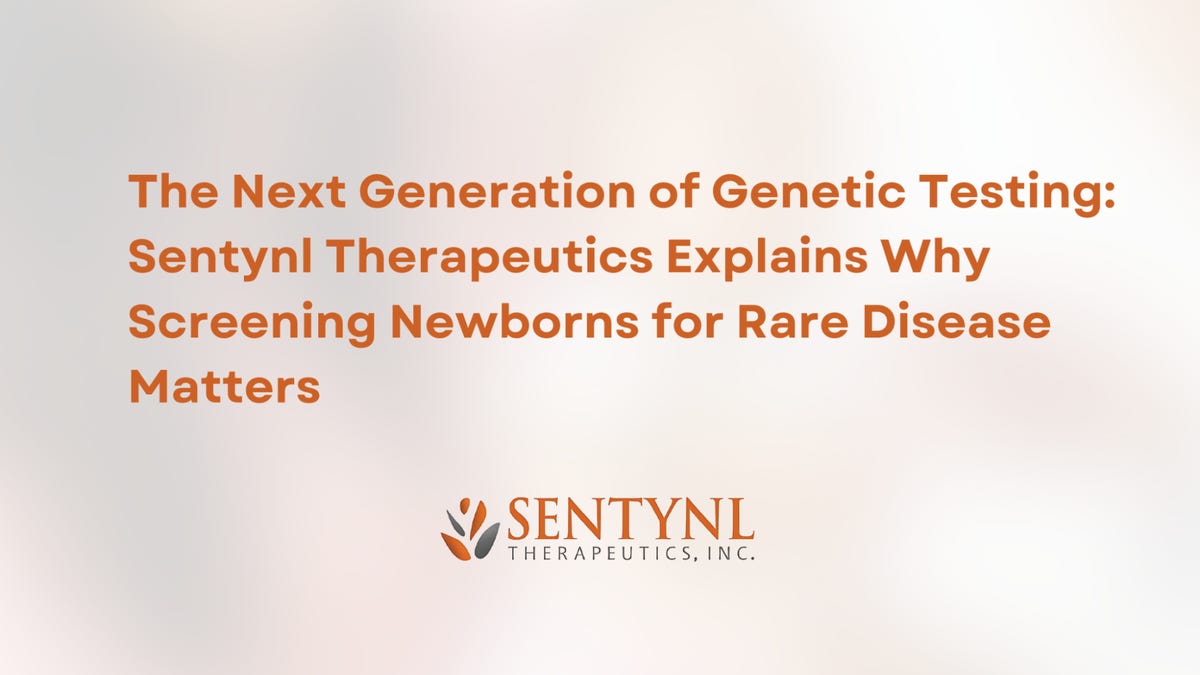Tyler Shepherd
| Contributor
Did you know that most of the 7,000 to 10,000 rare diseases affect children? With 80% of rare diseases having a genetic cause, getting a head start on genetic testing for infants can be the key to an earlier diagnosis and a better quality of life for new additions to the family.
It typically takes four to five years to diagnose a rare disease in children, but with a few drops of blood, genetic testing can shorten this to weeks or even days. Early identification of rare diseases not only improves the prognosis for children, but also spares families years of stress, numerous doctors’ visits, procedures, and financial strain in their search for answers.
While genetic screening is an emerging field and barriers to access still exist, many significant advancements are being made to increase availability and improve outcomes for the entire rare disease community.
Breaking Down Barriers to Rare Disease Screening
A few key challenges have led to delays in getting genetic tests into the hands of those who need them. For example, a lack of government buy-in and support means insurance companies aren’t as likely to cover genetic screening, which drives up costs and puts tests out of reach for many patients.
Some state Medicaid programs cover rapid whole genome sequencing (rWGS), which greatly increases access for patients in these states, but a gap still exists in standardizing rWGS federally. In addition, while some initiatives exist to promote rare disease research, more comprehensive policies and funding are needed to accelerate progress.
“The public health system doesn’t have the resources to keep pace with drug development,” said Stephen Kingsmore, MD, DSc, President and CEO, Rady Children’s Institute for Genomic Medicine. “The gap between what gets screened for versus what should get screened for is now tremendous.”
Public concern around the use and privacy of genetic data is also a key barrier to advanced screening for rare diseases. Parents want to understand how this data is being used, beyond their child’s diagnosis. To address concerns, care providers must educate parents on how the test works and advocate for its benefits.
Advancing the Next Generation of Gene Sequencing
There has been tremendous progress in the speed of screening and the availability of genetic tests since the entire human genome was first sequenced in 2003. One such innovation is rWGS.
In contrast to standard WGS, rWGS can provide results in under 50 hours, and it’s also 89% sensitive and 99.7% specific, meaning fewer false negatives and false positives.
Several industry leaders in healthcare and pharmaceuticals, such as Sentynl Therapeutics, are leading initiatives to raise awareness, support research, and improve access to advanced genetic screening for rare diseases in newborns.
One such initiative is the BeginNGS™ program, which aims to offer all infants and their families screening for hundreds of treatable genetic conditions that are known to be early onset, primarily impact newborns and infants, and are not included in standard biochemical newborn screening.
Earlier identification of a genetic condition through programs like this can lead to faster enrollment in clinical trials, which expedites timelines to potential solutions for the entire patient community.
“As a parent, having a child with an unknown health condition can be terrifying, and that’s why getting an answer as quickly as possible is a critical step,” said Matt Heck, President & Chief Executive Officer of Sentynl. “As a company focused on developing rare disease therapies, we understand the importance of increasing access to genetic testing, which is why we partner with the BeginNGS program and advocate for their work.”
A Brighter Future for Patients with Rare Diseases
The future is promising for patients with rare diseases and their families. To build on the recent progress in genetic testing for rare diseases, patients, their families, care providers, and other healthcare leaders must come together to push for broader access and continued innovation.
While barriers to genetic screening access still exist, ongoing efforts to enable earlier diagnosis will vastly improve outcomes and the long-term health and well-being of patients, their families and the broader rare disease community.
*This article is for informational purposes only and does not substitute for professional medical advice. If you are seeking medical advice, diagnosis or treatment, please consult a medical professional or healthcare provider.
